Where the Season Begins
When you hunt on the northern edge of Canada’s prairies, you get first crack at southbound ducks and geese
When you hunt on the northern edge of Canada’s prairies, you get first crack at southbound ducks and geese

By Hampton Bourne
Photography By Bill Buckley
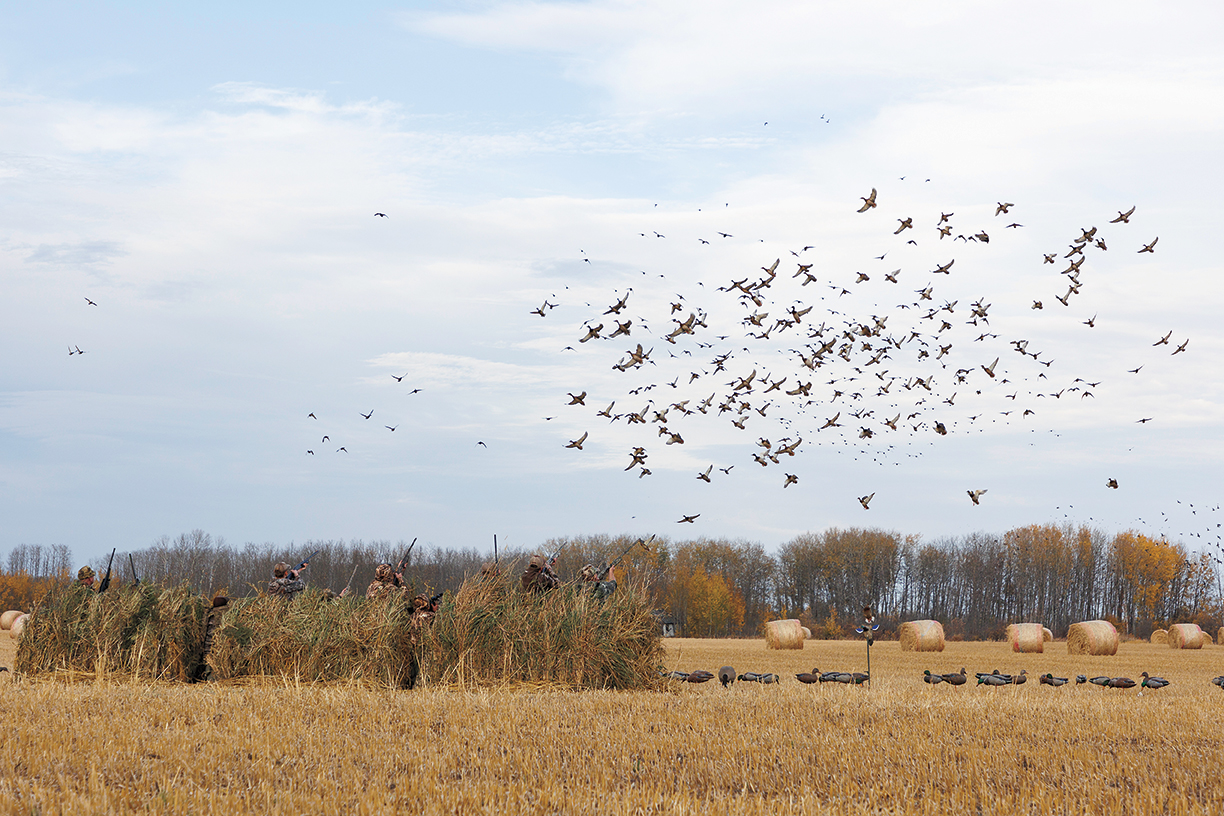
Everything you have heard about Canada is true. The vast, wide-open landscape is heaven for waterfowlers. As my flight approached Saskatoon, I had the perfect vantage point from which to survey an endless palette of brown and amber agricultural fields. The leftover grain in those harvested fields nourishes migrating ducks and geese as they begin their long journeys to wintering areas in the Lower 48. Even from 10,000 feet, however, I couldn’t spot my final destination, which was a few hundred kilometers closer to the North Pole.
Like Canada’s other prairie provinces, Saskatchewan is huge. Imagine the combined area of North Dakota, South Dakota, Nebraska, and the Texas pan-handle and you’ll be close to understanding how far Saskatchewan spreads its wings. The northern two-thirds of the province lie within the Boreal Forest, a seemingly endless sea of evergreens, lakes, and wetlands that stretches across the northern reaches of the continent. The southern third of Saskatchewan is mostly agricultural. Wheat, barley, peas, and canola are the predominant crops, and while farming efficiency has improved tremendously over the past decades, shifty grain still dodges combines on field edges and under tractor tires, creating an important food source for waterfowl. My destination was right on the northern edge of this agricultural belt, in a special place where fields meet forest.
As I stepped off the plane, a gust of cool air leaked through the door of the jet bridge—a welcome respite from the deflating heat I left behind in west Tennessee. After a customary tussle with baggage claim and a surprise upgrade on my rental car, I headed north.
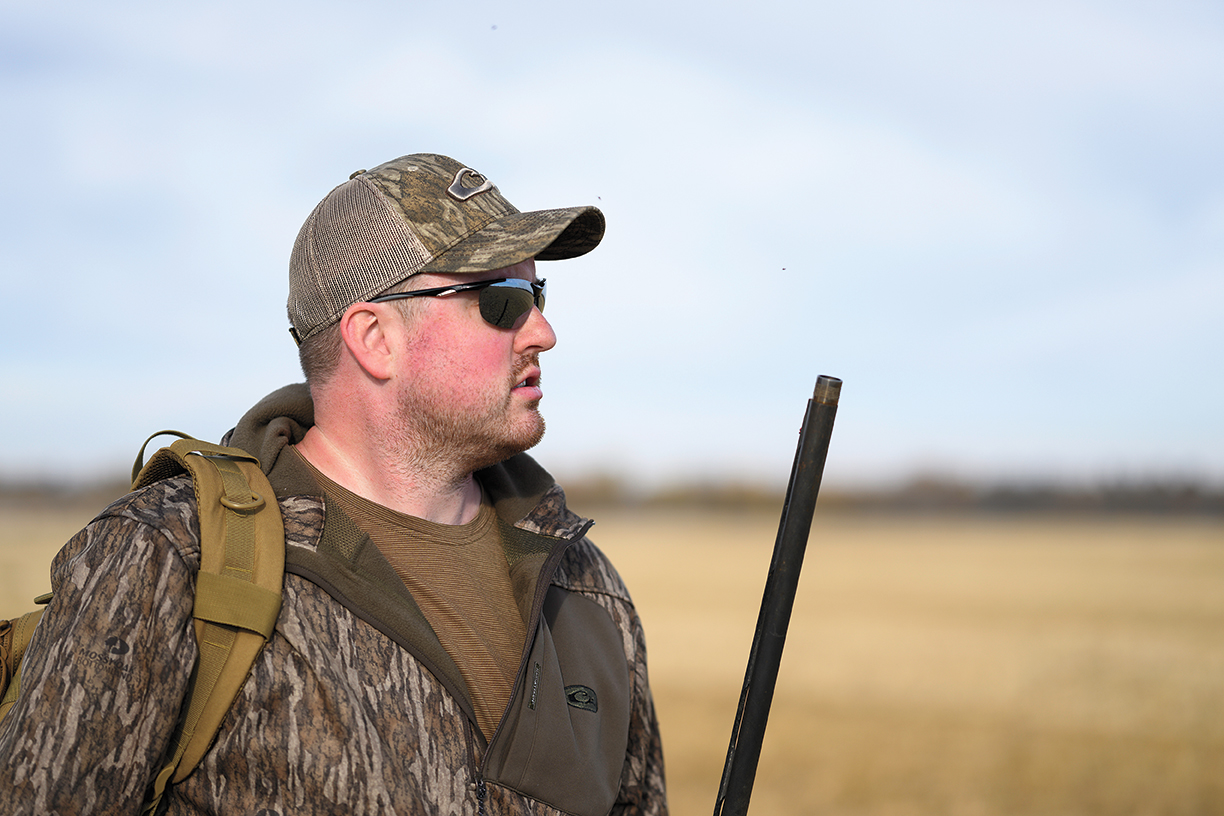
After four hours on the road rubbernecking for waterfowl on farm ponds and potholes, both of which were plentiful, I pulled into the parking lot at Goose Haven Lodge. Lance and Emily Robinson, along with their three-year-old daughter, Brooke, welcomed me, gave me a brief tour, and showed me to my cabin.
The Robinsons bought the operation in 2015, and through their relationship with Worldwide Trophy Adventures (WTA), they offer top-tier waterfowl, whitetail, and black bear hunts out of two separate lodges. WTA books hunts at Goose Haven and many other outfitters as part of their new partnership with Ducks Unlimited.
By hunting camp standards, the cabins were plush and the lodge had all the creature comforts: Wi-Fi, a lounge area, and a full selection of homemade cookies and baked goods that proved to be a constant temptation. More times than not, I succumbed.
After settling in, I overheard Lance say that he was leaving to scout goose fields for the next morning. I asked to tag along. I’m sure the daily afternoon scout is a time for him to be alone and decompress from the never-ending pressures of running a guiding operation, so I appreciated his patience as we rode around and I picked his brain about his operation and the hunting season.
"We’ve had a warmer fall than normal,” he said. “We still have a lot of specks and snows in the area. They’re usually gone by the first part of October. We’re also still seeing a lot of pintails and mallards that aren’t yet in full plumage."
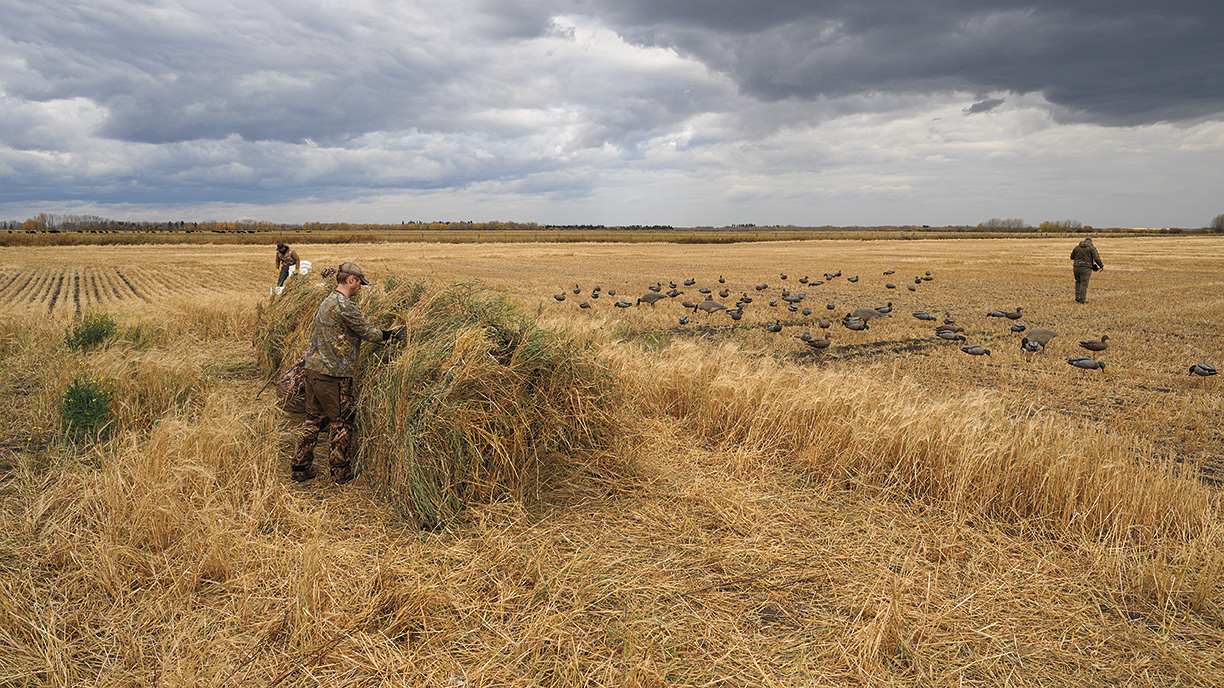
With the great Boreal Forest to the north and seemingly endless agricultural fields to the south, this area of Saskatchewan is the perfect place for an early-season waterfowl hunt.
Having never hunted so far north, I was curious about the diversity of habitats we were driving through. I asked Lance about the area and how many outfitters hunt north of him. He grinned and raised his hand with his fingers cupped in a circle. “Zero,” he said. “There may be some First Nation guides that hunt on the tundra, but my outfit is registered farther north than any other in Saskatchewan. We literally get first crack at ’em as they begin migrating south from their summer breeding grounds.”
We checked several fields, most of which held some birds. “These geese will feed in the mornings and afternoons and then roost on local farm ponds, rivers, and lakes,” Lance said. “We want to catch them coming in to feed in the mornings.”
We finished the loop and drove back to the lodge to settle in for dinner. The other hunters in camp had already finished eating, but it didn’t take long for me to catch up on some of the most delicious pork ribs I have ever tasted. The prospect of an early wake-up time overshadowed the evening’s festivities, however, so I packed up and headed to my cabin.
Sometimes I pretend that I’m tougher than I am. In my mind I like to think that I can handle an early reveille, but that alarm clock hit me like a tsunami. I stepped outside in the pitch black and was revived by the cold breeze. I slammed a coffee and met up with my hunting partners for the morning.
We drove through the darkness to a field about 30 minutes away. Our guide, Andy Berdan, has made an annual pilgrimage here from his home in Arlington, South Dakota, for 15 years and knows the area well. When we arrived at the field, Andy scoured the wheat stubble for the densest concentration of molted feathers and droppings. “I found the X,” he said. Under headlights my three partners and I set up the blind, an A-frame that we brushed with poplar branches and straw from the field while Andy put out about a hundred full-body decoys.
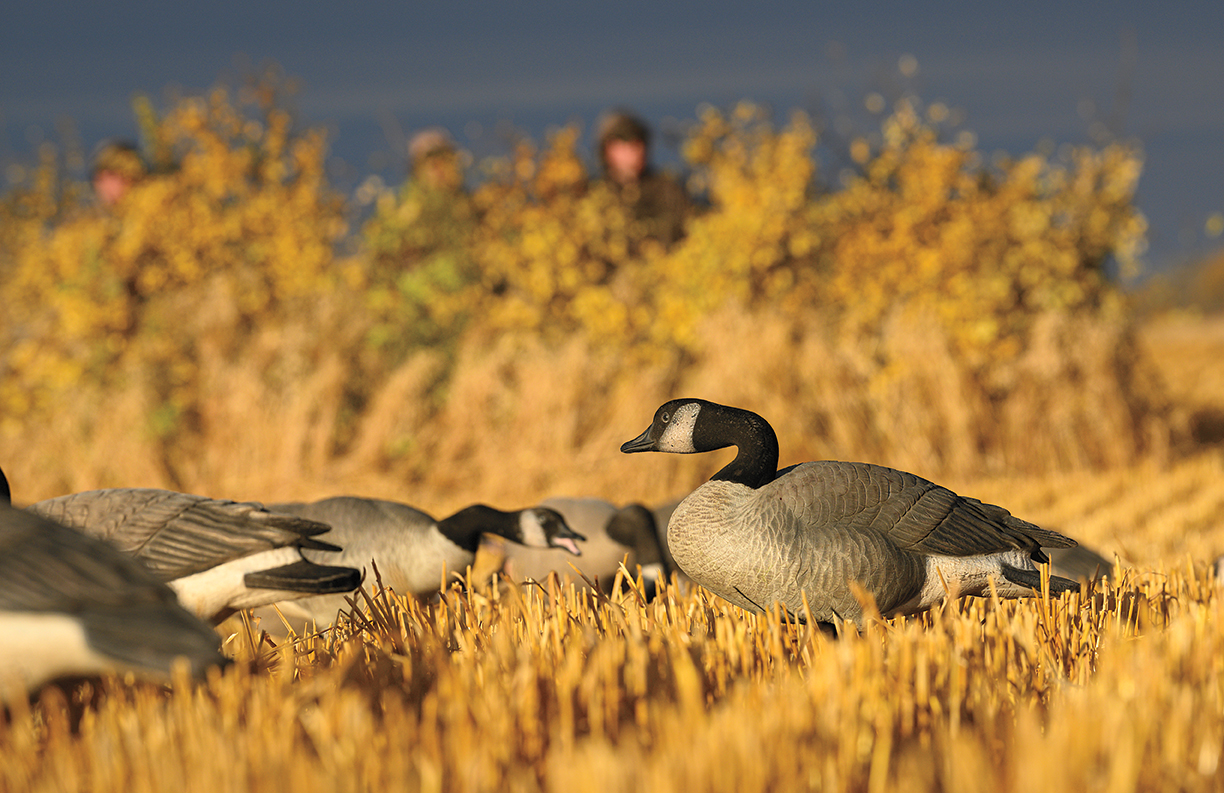
Full-body decoys set in the stubble are highly visible to approaching flocks and an irresistible enticement for hungry geese.
As daylight broke, the chorus of several flights of Canada geese rose in the distance. The wind was lighter than we hoped it would be, but the geese didn’t mind. Over the next hour, several singles and pairs of Canadas came in willingly. My partners clearly could shoot, and few geese escaped.
After enjoying those initial flights and making a slight adjustment to the decoys, we watched a flock of 12 geese lock up from a couple hundred yards away and barrel toward us. On a slow glide, they dropped their landing gear and backpedaled into the decoys. I’m afraid that I may have jumped like a poorly trained Labrador breaking on a duck. “Don’t shoot,” Andy said, and I held my fire.
Then I saw why Andy had called me off the shot. There was a line of 50 more honkers following right behind the first group. Three seconds later—which seemed like an eternity—Andy yelled “take ’em!” We took several geese from the approaching flock with our first volley and then dropped several more as the group on the ground took off from among the decoys. If shooting into one group of “bigs” is good, shooting into two groups simultaneously is a bucket-list experience. As the morning waned and the flights slowed, we collected our birds, cleaned up the field, and drove back to the lodge for a little R&R before an afternoon duck hunt.
The afternoon proved to be just as productive as the morning. We set up in a barley field on the edge of a marsh, hunting from an A-frame that was identical to the one we had used for the morning goose hunt. We could see ducks stretching their wings over the marsh several hundred yards to our northeast. “They’ll come in here to feed pretty soon,” said our guide, Henri Lazar, a Saskatchewan native and duck hunting aficionado.
Henri set the decoys in a classic “J” pattern right up against the blind. Initially I was surprised and borderline skeptical about how close the decoys were to the blind. Then I was reminded that when you come to Canada you’re hunting ducks that have not been hunted this season or at all. I also remembered some poignant advice I once received from a wise old duck hunter: “Don’t guide the guide.”
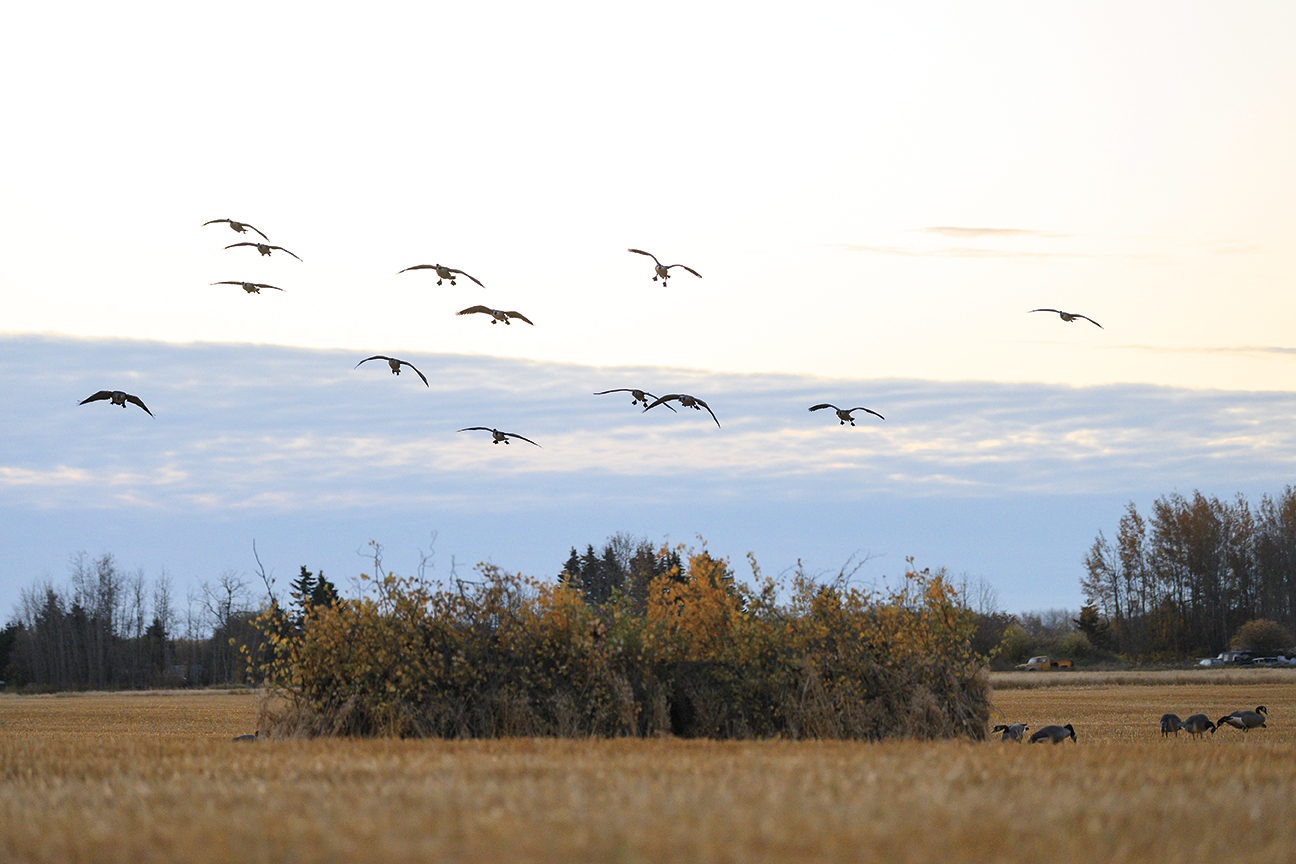
About an hour later the ducks proved Henri right. With the wind directly at our backs, flight after flight of mallards came straight in—not circling, not surveying our setup, just landing. The duck work was phenomenal. I would conservatively guess that we shot into two groups of over a hundred birds, five or six groups of around 50, and certainly one group that was the biggest group I have ever raised a gun on.
“Henri, how many do you think was in that group?” I asked after the shooting had stopped.
“Three hundred easily,” he barked back. “Probably more.”
As we were leaving, I asked Henri what was on the menu back at the lodge. “Thanksgiving dinner,” he said. “Today is Thanksgiving Day in Canada.”
The turkey and dressing put me down without much effort, and the 3:30 rooster crow the next morning was even more jarring than the day before. The weather had cooled down overnight and the wind had picked up. We were optimistic for the morning goose hunt.
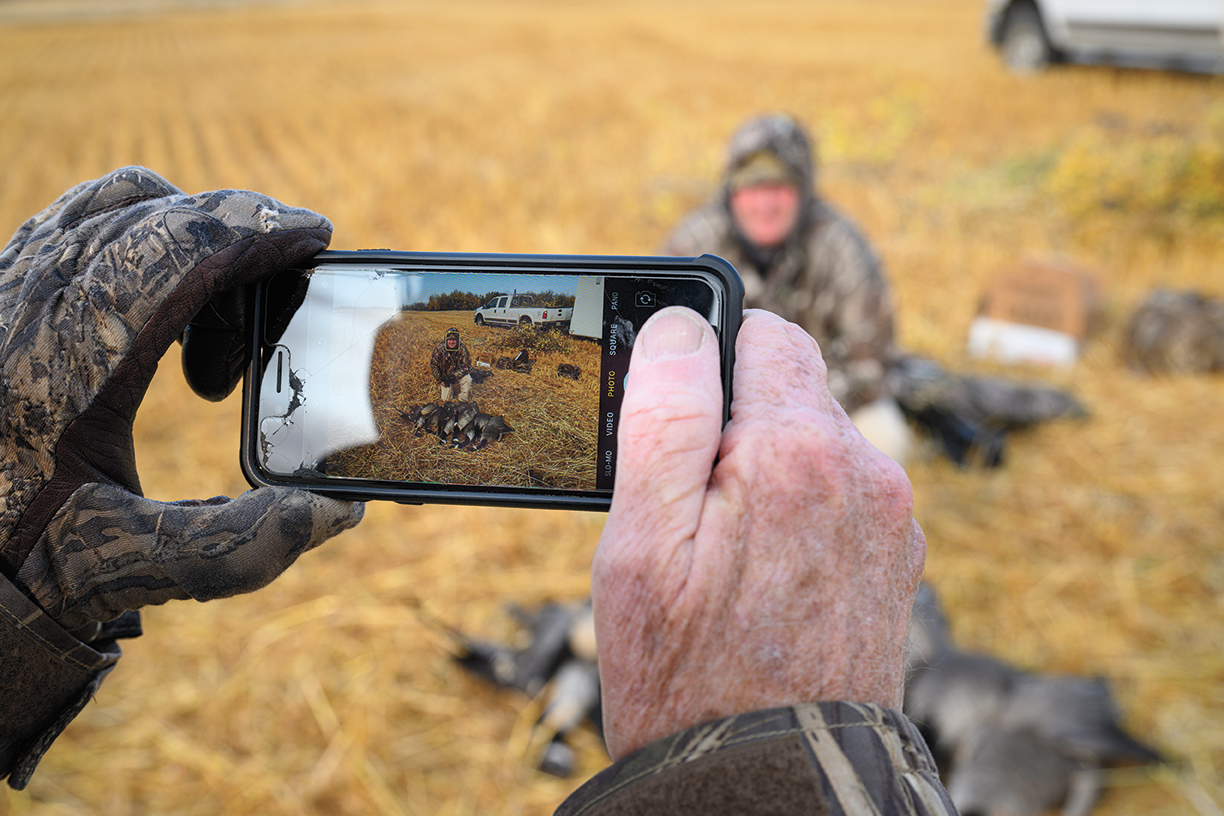
Hunters come to Saskatchewan for the birds, and they leave with memories that last a lifetime.
“You look tired,” Andy said as we waited for the first flight. I couldn’t muster a witty reply, but I was glad I had packed extra layers. The wind had a bite to it. By now, we were masters of the A-frame, and we got it set up in an oat field with plenty of time to spare. The front had carried in dark low-hanging clouds, and the geese followed the same playbook as they had the previous morning. These Canadas were abundant and ready to play ball. At one point a flight of 30 mallards angel-winged right into our spread. Andy once again held us back, and we unloaded on a group of 40 big Canadas that had been following the ducks. It was a great hunt.
That evening we were back in a different barley field for a hybrid duck and snow goose hunt. The overcast skies prevented any sunlight from highlighting the decoys, and the lack of shadows made for difficult concealment. The ducks were tough. White geese were a little more interested, but we didn’t get the same kinds of opportunities that we had enjoyed the previous day.
That evening, as we all bellied up to medium-rare ribeyes and marinated mallard breasts, it struck me how we had all become friends. The outdoors has a clever way of bonding complete strangers through a common interest. We laughed and traded stories about our spouses and children and reminisced over the experiences of the past two days.
The goose hunt on my final morning took place in a pea field, and it was just as productive as the two previous mornings had been. After packing up and sharing best wishes with the guide staff, I hopped into my rental car and pulled out of the parking lot on my way back to Saskatoon. Three swans lit in the pond next to the lodge’s driveway as I drove by. It was the first time I had seen swans in the wild. They were a magnificent reminder that hunting Canada is just different, even when subtly impressive. The next morning my flight departed bright and early. I left Canada physically drained but rejuvenated on the inside—where it matters most.
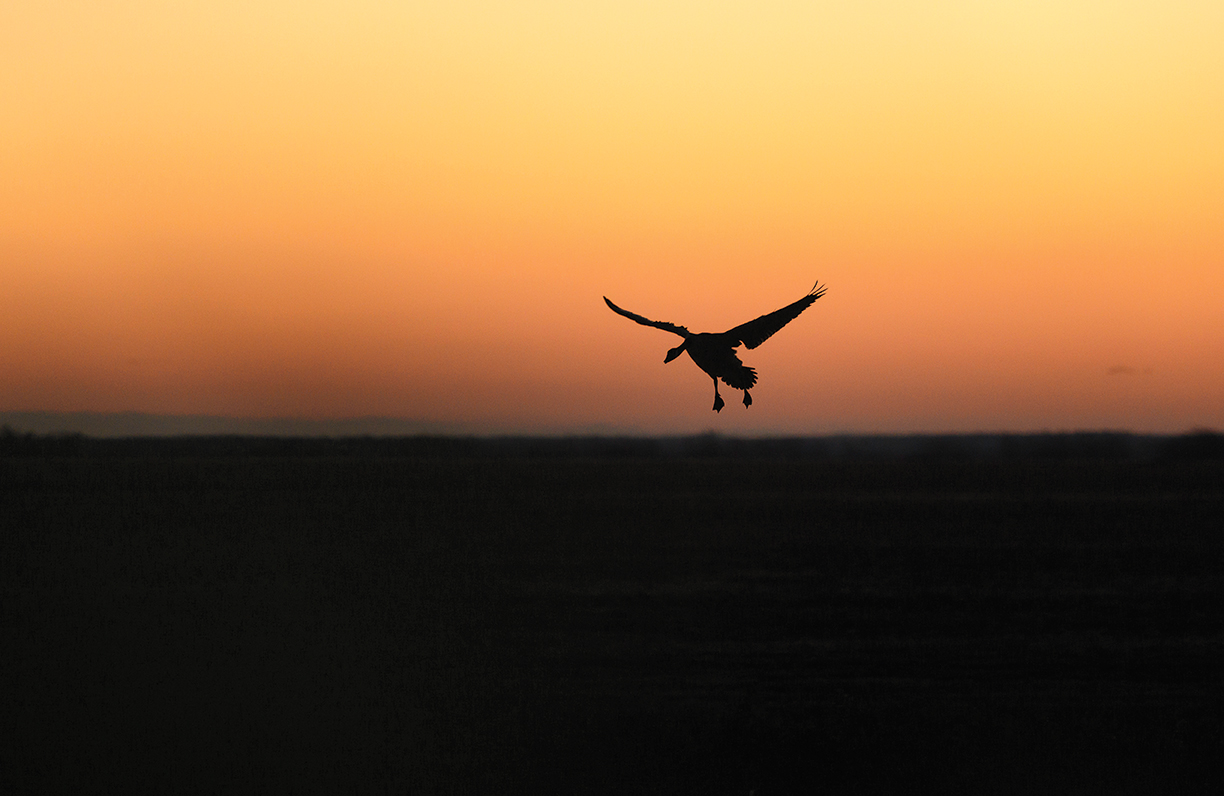
These birds are southbound, just beginning their long journeys to wintering grounds in the Lower 48 and beyond.
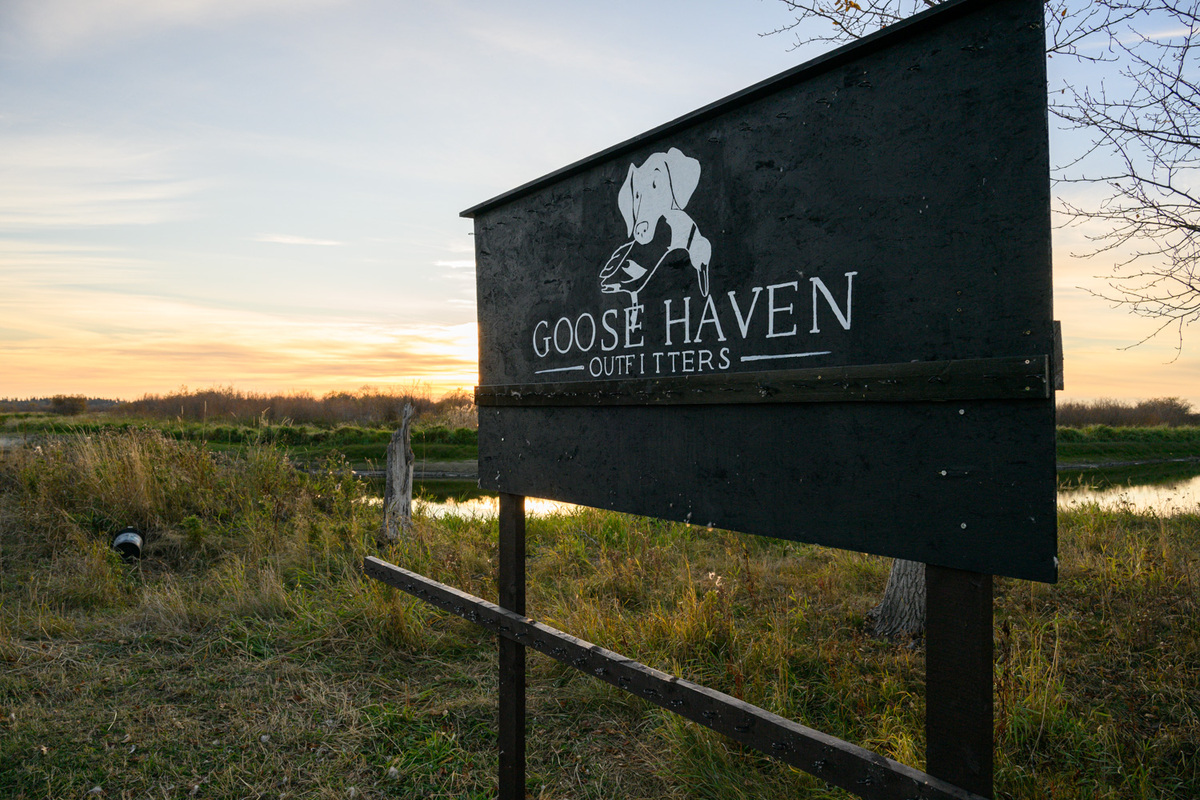
Through a new partnership with Worldwide Trophy Adventures, DU members can now book exclusive hunting and fishing adventures around the globe, including trips to Goose Haven Lodge, where owners Lance and Emily Robinson (pictured here with their daughter, Brooke) offer outstanding hunting and warm hospitality. A portion of the proceeds from every trip will support DU’s wetlands and waterfowl conservation mission. Find your dream excursions online at ducks.org/trips.
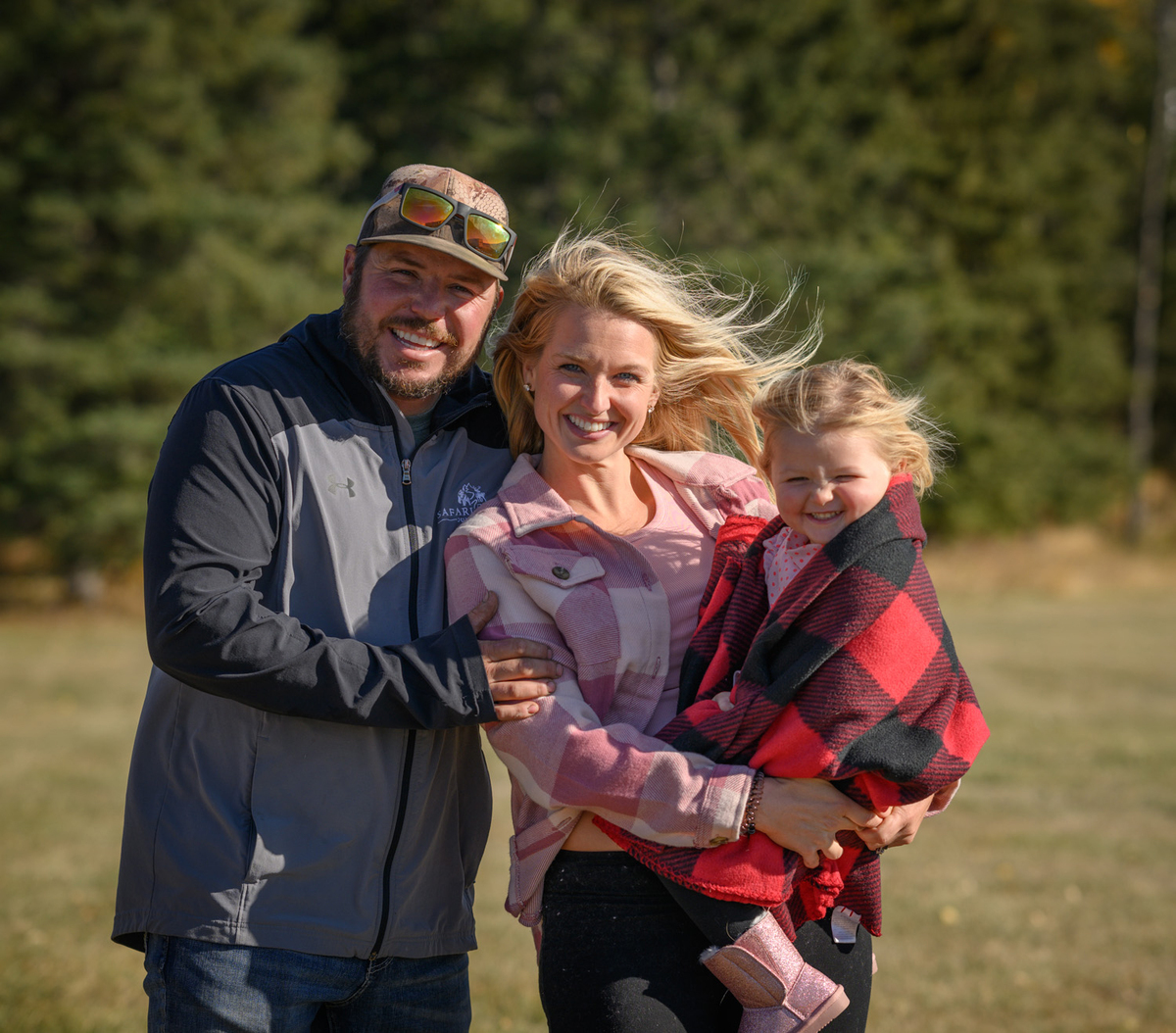
Ducks Unlimited uses cookies to enhance your browsing experience, optimize site functionality, analyze traffic, and deliver personalized advertising through third parties. By continuing to use this site, you agree to our use of cookies. View Privacy Policy